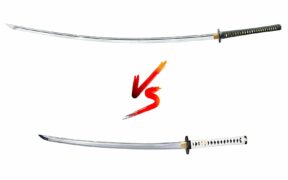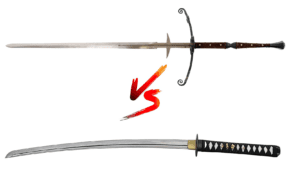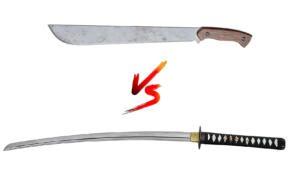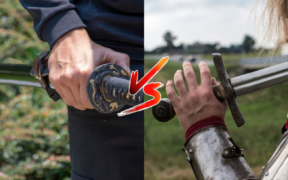Katana vs Longsword – Is There Really a Winner?
NO AI USED This Article has been written and edited by our team with no help of the AI
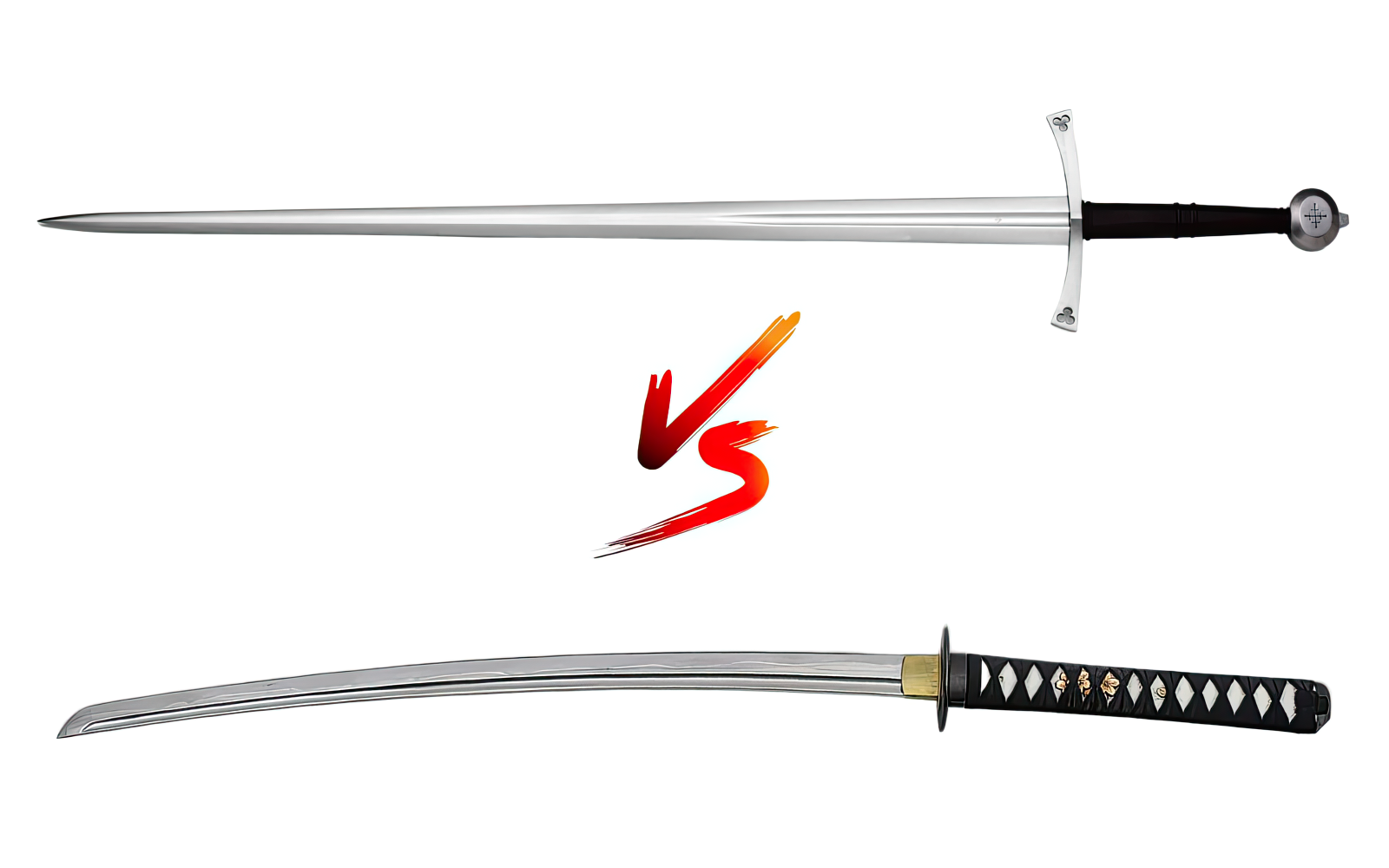
The katana and longsword and katana are among the most renowned blades in the world. Each has its own unique design, purpose, and have left a significant impact on history.
As a cultural symbol of Japan, it still plays a role in various ceremonial purposes. Wielded by the samurai, the katana excels in slashing attacks. Meanwhile, the longsword, once associated with the knights, duels, and plate armor is Europe’s most iconic blade.
This article examines the combat and design differences between these two legendary swords, their history, evolution, and determine which might have the upper hand in a duel.
Design and Characteristic Differences
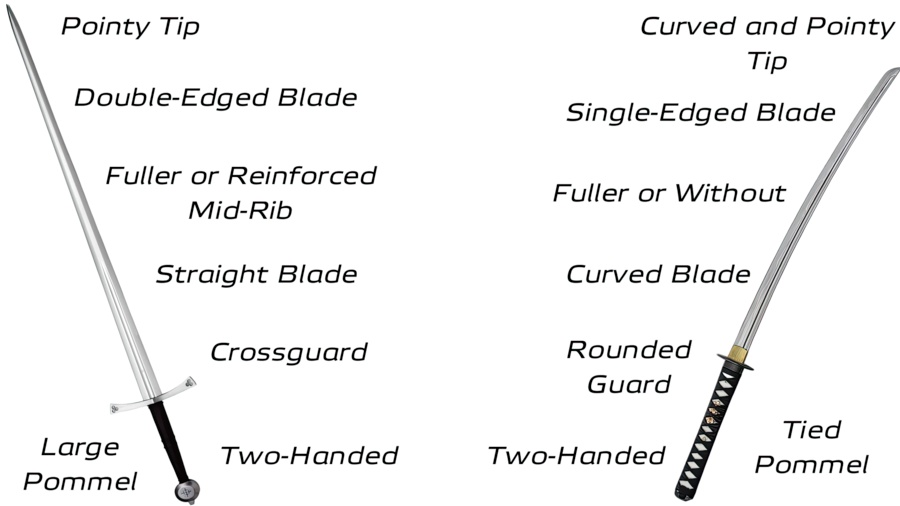
Katana swords have curved, single-edged blades with varying blade profiles and a pointed tip. The blades feature a visible temper line and an optional fuller near the spine. The handguard often has different motifs depending on the preference of the swordsmith or wielder. Its two-handed hilt can be wrapped in silk, cotton, or leather in different styles.
The longsword has a straight, double-edged blade with an acute or rounded tip. A fuller is often present to reduce the overall weight of the sword. It is also known for its characteristic cross guard consisting of two horizontal bars that extend perpendicularly to the blade. Lastly, its two-handed handle is leather-wrapped and ends in a rounded pommel, which can vary in shape.
Comparing Performance in Battle
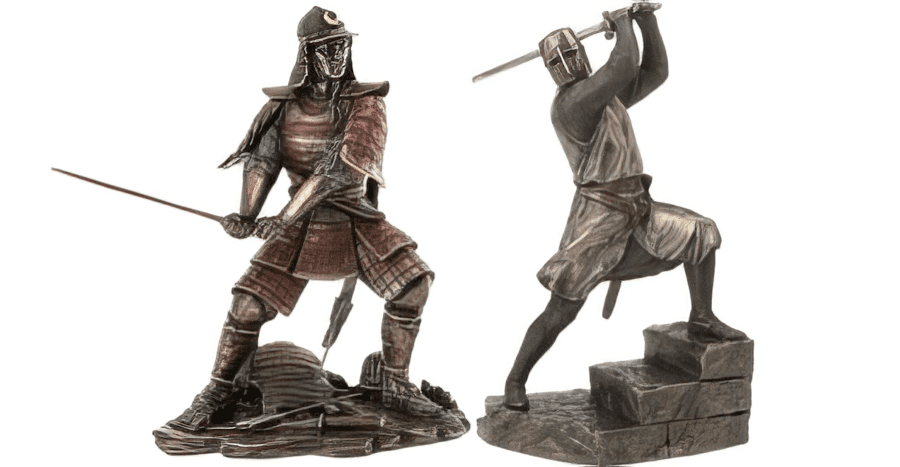
In battle, much depends on the skill of the swordsperson. Determining the best sword without considering its wielder’s skill depends on their performance in the following:
- Cutting
- Thrusting
- Speed
- Dealing with Armor
- Durability & Defense
- Versatility & Adaptability
Here are some key attributes between the longsword and katana, with explanations of why one might excel over the other in specific scenarios
1. Cutting – Katana (Winner)
Cutting involves striking with the sharpened edge from the side.
Since the katana’s curved, single-edged blade provides greater bevel space, which aids in maintaining blade alignment, it is highly effective in cutting. Its curvature allows the blade to enter the target smoothly as the cutting force is distributed evenly across the blade. This design ensures more consistent slashing damage compared to straight swords.
Due to the greater bevel space the katana has with its single-edged nature, it allows for easier blade edge alignment, which is crucial for how the edge impacts its target.
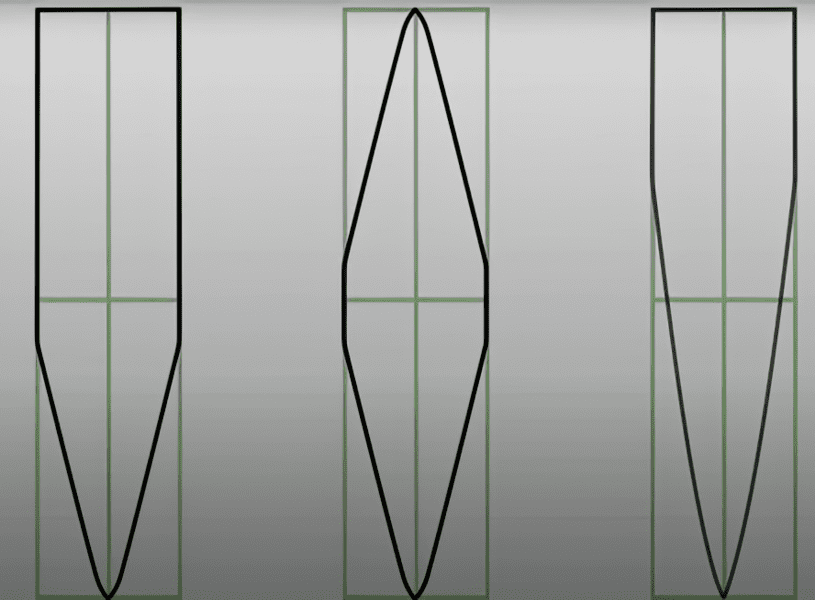
Meanwhile, the longsword typically has a narrower blade which ensures that it delivers cuts that are just as damaging as those from the katana. However, due to the longsword’s design, achieving the proper blade alignment is more challenging compared to the katana.
2. Thrusting – Longsword (Winner)
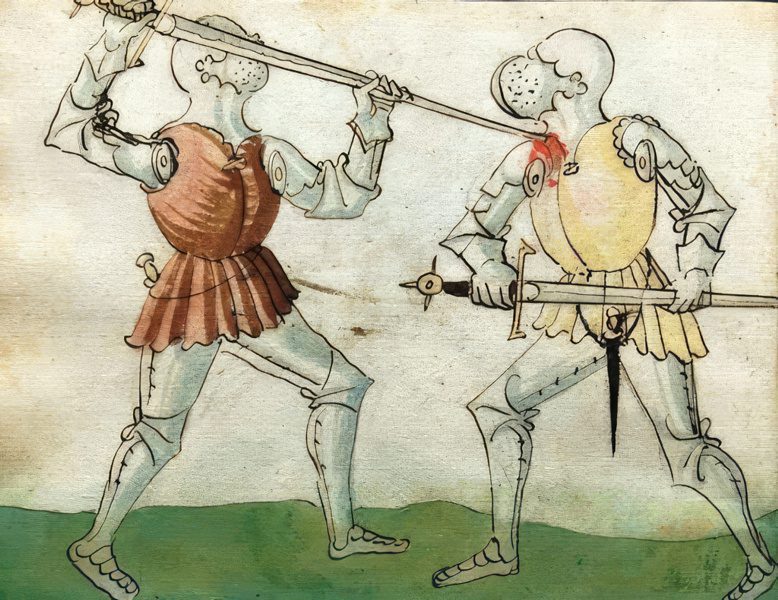
The katana is capable of powerful thrusts, but due to its curved, single-edged blade, it does not have the same impact as the longsword.
Due to its straight, double-edged blade and pointed tip, the longsword excels at thrusting attacks, penetrating its target almost as deeply as a rapier.
3. Speed – Both (Tie)
Since the longsword and katana are around the same weight, ranging between 2.2 to 3.1 lbs (1.1 to 1.4 kg), their speed is comparable and largely depends on the wielder’s skill. Some points to take note of are:
- Design – The longsword’s hilt-heavy design compared to the katana’s tip-heavy style may give the longsword a slight advantage in recovery time.
- Length – The katana’s shorter blade can provide faster maneuverability.
Therefore, determining the faster sword is subjective, especially due to the many variations of the katana and longsword. It can be safe to say that they are more or less equally matched in speed.
4. Dealing with Armor – Longsword (Winner)
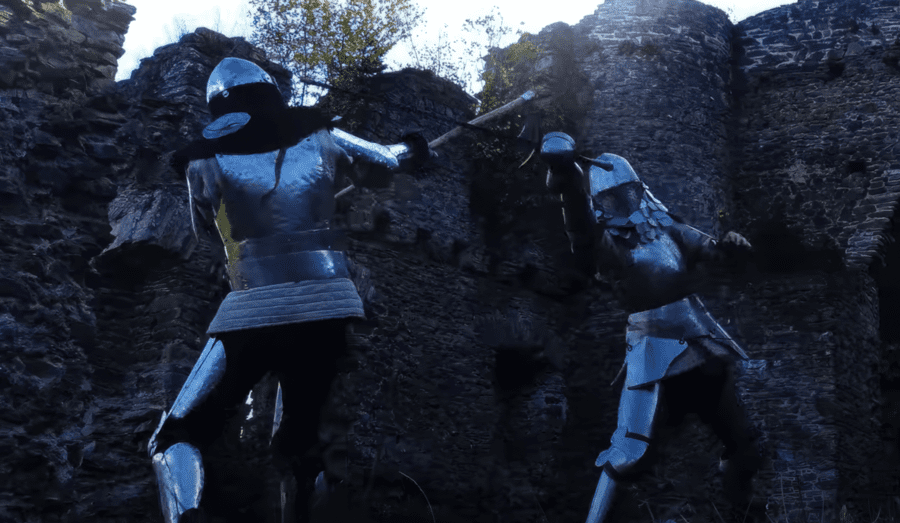
The katana’s effectiveness against armor, especially those used in medieval and early modern warfare, is limited compared to the longsword.
The longsword was specifically designed to combat armor, particularly during the 15th century. Its sleek, double-edge blade allowed it to exploit gaps in heavy plate armor and slide through lighter chainmail.
Dequitem, an active armored HEMA practitioner agrees as he said, “For me, a well-balanced two-handed longsword is the optimal weapon against armor”.
5. Durability & Defense – Longsword (Winner)
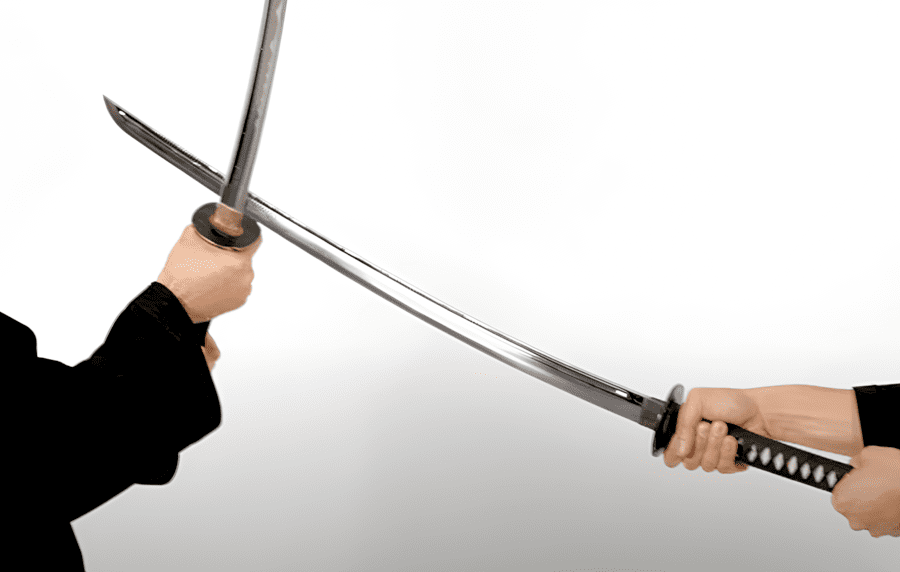
Durability refers to a sword’s ability to withstand heavy use in combat, retaining its sharpness, and enduring daily wear and tear. This largely depends on the swordsmith’s crafting and hardening techniques.
The katana’s sharpness and cutting ability are achieved through differential hardening, a process that hardens the blade’s edge while leaving the spine more flexible.
On the other hand, the longsword generally has broader, straight blades that offer more durability when dealing with harder targets such as shields and armor. Its double-edged design also means that there is another edge to rely on if one becomes damaged or dulled, enhancing its overall durability in combat.
In terms of defense, the katana has a smaller handguard compared to the longsword’s longer crossguard, which can be used to deflect incoming attacks.
6. Versatility & Adaptability – Longsword (Winner)

Versatility refers to how well a sword performs in various combat scenarios— be it on foot, horseback, duel, or battlefield.
The katana’s shorter blade makes it easier to carry and unsheath, allowing for a quick draw. However, its single-edged blade limits its ability at offense and defense.
The longsword has a slightly longer blade, making it harder to carry than katanas. Despite that, they are much more versatile in combat, with abilities in not just slashing and thrusting, but also functions like a dagger using half-swording techniques. Additionally, its heavy pommel can be used for bashing.
Conclusion & The Winner in a Duel

Determining a clear winner between the longsword and katana is difficult—some might even say impossible as both were designed with distinct purposes and excelled in their respective roles.
Nevertheless, in a hypothetical duel between the katana and longsword between traditional wielders suited in their respective attires, the longsword is likely to have the upper hand. This is due to the longsword’s versatility and the fact that its wielders tend to wear heavy armor. Even without armor, the longsword still has a reach advantage over the katana.
As John Clements, a leading authority on historical fencing says, “The katana is the extreme single-edged cutting performer while the longsword is an excellent multitasker”.
